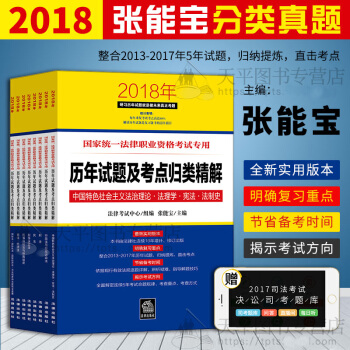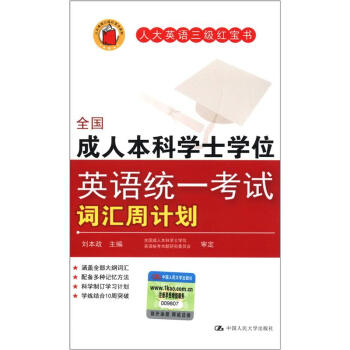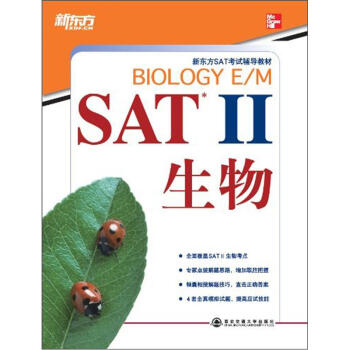

具体描述
产品特色
编辑推荐
《SAT II 生物》全面覆盖SAT II生物考点,专家点拨解题思路,增加取胜把握;倾囊相授解题技巧,直击正确答案;4套全真模拟试题,提高应试技能。SAT考试必备专业辅导用书。
内容简介
《SAT II 生物》由新东方从美国麦格劳-希尔出版公司引进,是备考SATⅡ生物的专业辅导教材。书中不仅全面涵盖了SAT Ⅱ生物的考点,而且提供4套全真模拟试题供考生自测。此外,书中对所有题目的详细解析,便于考生认识自身的优势与不足,科学备考。
作者简介
Stephanie Zinn,SAT生物教师,教学经验丰富,著有《SAT II生物》。
目录
PART I: ABOUT THE SAT BIOLOGY E/M TESTChapter 1: What You Need to Know About the SAT Biology E/M Test
The SAT Subject Tests
The SAT Biology E/M Test
Taking the Test
Chapter 2: How to Use This Book
Studying Smart for the SAT Subject Tests
Deciding between Biology-E and Biology-M
Chapter 3: Smart Tips for the SAT Biology E/M Test
Preparing for the Test
The Home Stretch
During the Test
After the Test
Chapter 4: Diagnostic Test
Answer Sheet for the Diagnostic Test
Diagnostic Test
Score Sheet
Answer Key
Answers and Explanations
Chapter 5: Test-Taking Skills and Strategies
General Test-Taking Strategies
Question Type 1: The Matching Game
Question Type 2: The Numbered Diagram
Question Type 3: The Direct
Question
Question Type 4: The "Pick the 'Wrong' Answer" Question (A.K.A."Least/Except/Not" Questions)
Question Type 5: Easy as I, II, III
Question
Type 6: The Laboratory Question
PART II: REVIEW OF BIOLOGY TOPICS
Chapter 6: Understanding Molecular and Cellular Biology
Lesson 6-1. Molecular Biology
Vocabulary
Elements, Compounds, and Bonds
The Elements of Life
Water, Water, Everywhere
The Role of Carbon
Carbohydrates and the
Dehydration Reaction
Amino Acids, Proteins, and Peptide Bonds
Nucleotides and Nucleic Acids
Lipids and Phospholipids
Lesson
Summary
Review Questions
Answers
Lesson 6-2. Cells
Vocabulary
Characteristics of Cells
Features of Eukaryotic Cells
Cell
Membranes and Cell Walls
Cellular Transport
Plant and Animal Cells
Lesson Summary
Review Questions
Answers
Lesson 6-3. Energy in the Cell: Enzymes, Respiration, and Photosynthesis
Vocabulary
Enzymes and Energy Carriers
Respiration
Fermentation
Photosynthesis
Lesson Summary
Review Questions
Answers
Lesson 6-4. DNA, RNA, Protein
Vocabulary
Copying DNA
DNA to mRNA
MRNA to Polypeptide
Mutations
Lesson Summary
Review Questions
Answers
Lesson 6-5. Mitosis and Meiosis
Vocabulary
The Cell Cycle
Mitosis
Meiosis
Lesson Summary
Review
Questions
Answers
Chapter 7: Understanding Genetics
Lesson 7-1. Mendelian Inheritance
Vocabulary
Mendel: Patterns of Inheritance
Lesson Summary
Review
Questions
Answers
Lesson 7-2. The Genetic Bases of Inheritance
Vocabulary
DNA: The Genetic Material
Mendel and Molecules
Chromosomal Aberrations
Genetic Technology
Lesson Summary
Review Questions
Answers
Lesson 7-3. Beyond Simple Inheritance
Vocabulary
Sex Genes and Sex-Linked Genes
Polygenic Inheritance
Extra-Nuclear Genes
Beyond DNA
Lesson Summary
Review Questions
Answers
Lesson 7-4. Using Punnett Squares
Vocabulary
A Quick Review of Probability
Making a Punnett Square
Modeling Inheritance
Lesson Summary
Review Questions
Answers
Lesson 7-5. Using Pedigrees
Reading a Pedigree
Interpreting from a Pedigree
Lesson Summary
Review Questions
Answers
Chapter 8: Understanding Evolution and Diversity
Lesson 8-1. Evolution and Natural Selection
Vocabulary
Darwin and Natural Selection
Evidence for Evolution
Lesson
Summary
Review Questions
Answers
Lesson 8-2. Mechanisms of Evolution
Vocabulary
Evolution in a Population
Creating Diversity: Speciation
Lesson Summary
Review Questions
Answers
Lesson 8-3. Origins of Diversity
Vocabulary
Creating Cells
After Cells
Classifying Life
Lesson Summary
Review Questions
Answers
Lesson 8-4. The Three Domains and the Five Kingdoms
Vocabulary
Kingdom Monera
Kingdom Protista
Kingdom Fungi
Kingdom Plantae
Kingdom Animalia
Lesson Summary
Review Questions
Answers
Chapter 9: Understanding Organismal Biology
Lesson 9-1. Support and Movement
Vocabulary
Support
The Human Skeletal System
Movement
The Human
Muscular System
Lesson Summary
Review Questions
Answers
Lesson 9-2. Transport
Vocabulary
Open and Closed Systems
The Human Circulatory System
The Human Respiratory System
Lesson Summary
Review Questions
Answers
Lesson 9-3. Nutrition
Vocabulary
The Human Digestive System
Excretion
The Human
Excretory System
Lesson Summary
Review Questions
Answers
Lesson 9-4. Protection
Vocabulary
The Skin
The Immune System
Lesson Summary
Review
Questions
Answers
Lesson 9-5. Coordination
Vocabulary
The Human Nervous System
The Human Endocrine System
Lesson Summary
Review Questions
Answers
Lesson 9-6. Reproduction and Development
Vocabulary
The Human Reproductive System
Development
Lesson
Summary
Review Questions
Answers
Chapter 10: Understanding Ecology
Lesson 10-1. Population Growth
Vocabulary
Populations
Exponential Growth
Limited Growth
Lesson
Summary
Review Questions
Answers
Lesson 10-2. Food Chains and Food Webs
Vocabulary
Communities and Ecosystems
Food Chains
Food Webs
Energy Flow
Pyramids
Lesson Summary
Review Questions
Answers
Lesson 10-3. Ecological Relationships
Vocabulary
Symbiotic Relationships
Competition
Lesson Summary
Review Questions
Answers
Lesson 10-4. Biomes
Vocabulary
Terrestrial Biomes
Aquatic Biomes
Ecological Succession
Lesson Summary
Review Questions
Answers
Lesson 10-5. Nutrient Cycles
Vocabulary
Water Cycle
Carbon Cycle
Nitrogen Cycle
Lesson
Summary
Review Questions
Answers
PART III: FOUR PRACTICE TESTS
Practice Test 1: Biology-E
Answer Sheet
Practice Test
Answer Key
Score Sheet
Answers and
Explanations
Practice Test 2: Biology-E
Answer Sheet
Practice Test
Answer Key
Score Sheet
Answers and
Explanations
Practice Test 3: Biology-M
Answer Sheet
Practice Test
Answer Key
Score Sheet
Answers and
Explanations
Practice Test 4: Biology-M
Answer Sheet
Practice Test
Answer Key
Score Sheet
Answers and
Explanations
前言/序言
用户评价
这本书的封面设计实在太吸引人了,那种深邃的蓝色调,配上简洁有力的字体,一眼看上去就给人一种专业、可靠的感觉。我是在备考的最后冲刺阶段买的,当时感觉时间紧任务重,急需一本能够系统梳理知识点、同时又兼顾应试技巧的“救星”。拿到手翻开目录时,首先注意到的是它对SAT II生物考试大纲的覆盖度,感觉非常全面,几乎没有遗漏任何可能出现在考卷上的核心概念。尤其是关于生态学和遗传学那几个章节,编排得特别有逻辑性,从基础定义到复杂的案例分析,层层递进,让人感觉知识点像是被精心编织好的网,牢牢地抓住了重点。我记得我尤其欣赏它在细胞生物学部分的处理方式,那些复杂的细胞器结构和功能,它不是简单地罗列,而是通过大量的对比图和流程图来解释,即使是初次接触这些复杂概念的人,也能很快建立起清晰的图像记忆。这种将抽象概念具象化的处理手法,对于我这种更偏向视觉学习的考生来说,简直是福音。而且,书本的纸张质量和印刷清晰度也相当不错,长时间阅读下来眼睛不容易疲劳,这在备考的疲劳期里,绝对是一个加分项。
评分我不得不提一下这本书附带的那些模拟试卷,它们的质量简直可以媲美官方真题。很多辅导书的模拟题,要么过于简单,要么就是故意设置一些非常偏门的、基本不考的内容来“灌水”,让人做了白做。但这套模拟卷的难度分布、题型结构,甚至连出题人的“思维陷阱”都把握得非常到位。我严格按照考试时间进行模考,每次做完都会仔细对照答案和解析,记录自己的失分点。通过分析这几套模拟卷,我清楚地识别出自己在“生物多样性保护”和“人类生理系统”这两块知识点的覆盖不足。更重要的是,它不仅提供了选择题的训练,对于那些需要理解实验推理过程的题目,它也给出了非常清晰的逻辑链条。这套模拟题真正起到了“以考促学”的作用,它告诉我,我现在距离实战水平还差在哪里,并且指明了最后的攻坚方向。
评分如果说这本书有什么可以改进的地方,那可能是在一些非常前沿或细微的生物技术领域,比如近几年的基因编辑技术进展,可能更新速度上稍微跟不上最新的科研动态。但话说回来,SAT II生物考试的考察范围相对稳定,通常不会涉及过于尖端的、仍在快速发展的领域。因此,对于绝大多数考生来说,这本书提供的知识深度和广度是完全足够的,并且是完全覆盖考试核心要求的。总的来说,这本书在我备考过程中扮演了“定海神针”的角色。它不是那种让你看了就觉得“豁然开朗”的速成书,而更像是一位循循善诱、要求严格的私人导师。它教会我如何系统地学习生物学,而不是死记硬背一堆名词,这种学习方法的植入,比单纯拿高分更有价值。我强烈推荐给那些希望打下扎实基础,并且目标是冲击顶尖院校的认真备考者。
评分说实话,这本书的难度设置对我来说,前期有点偏高,但正是这种“高难度”的铺垫,才真正起到了拉高我整体水平的作用。一开始做那些例题和章节末尾的测试题时,我经常会因为一些细节性的陷阱而失分,感觉自己对知识的掌握还停留在“知道是什么”的层面,而不是“理解为什么”的深度。但这本书厉害的地方就在于,它不会让你停留在困惑中。每一个错题后面,它的解析都详尽得令人发指,不仅仅告诉你正确答案是什么,还会深入剖析其他选项为什么是错的,并且常常会追溯到该知识点在不同生物学分支中的关联性。这种“刨根问底”的解析方式,迫使我必须去重新审视和构建自己的知识体系。比如,在涉及到生物化学反应那一块时,它不仅解释了酶促反应的原理,还引入了不同pH值和温度对反应速率影响的定量分析,这比我之前看的任何教材都要深入。这种深度,让我从一个仅仅追求“刷题得分”的应试者,逐渐转变为一个真正理解生物学原理的学习者,这种转变在考场上带来的自信心是无价的。
评分这本书的排版和整体阅读体验,是我用过的备考资料里最舒服的一个。很多教辅书为了塞进更多的内容,往往把版面弄得密密麻麻,阅读起来非常压抑,感觉自己像是在啃一块干硬的知识砖头。但《新东方·SAT2:生物》在这一点上做得非常出色。它巧妙地运用了大量的留白,使得重点内容能够“跳”出来。关键术语都会用粗体或者不同的颜色进行标识,非常利于快速检索和记忆。特别是那些涉及到实验设计和数据分析的部分,它会用清晰的图表来展示变量控制和结果解读,避免了纯文字描述带来的晦涩感。我发现自己可以非常流畅地在不同章节之间跳转,而不会产生迷失感。这种高效的视觉引导,极大地提高了我的复习效率。在考前最后一周,我就是靠着快速翻阅那些标记过的重点和图表,迅速激活了所有的记忆节点,感觉整个知识网络都清晰地呈现在脑海里,而不是一堆零散的知识点。
评分内容没的说了,非常实用!
评分新东方·SAT2数学(Level 2)
评分儿子准备考SAT2,他告诉我买这个!!!
评分¥47.30
评分内容没的说了,非常实用!
评分物流挺快,态度挺好,我很满意。
评分新东方出品,必属精品!
评分不错不错不错不错不错不错不错
评分速度很快,书的质量还不错
相关图书
本站所有内容均为互联网搜索引擎提供的公开搜索信息,本站不存储任何数据与内容,任何内容与数据均与本站无关,如有需要请联系相关搜索引擎包括但不限于百度,google,bing,sogou 等
© 2025 book.coffeedeals.club All Rights Reserved. 静流书站 版权所有

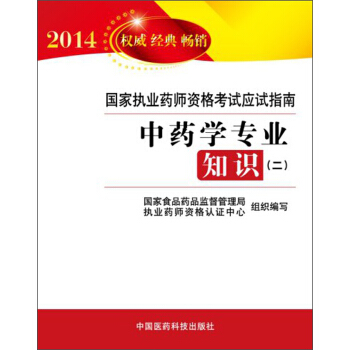

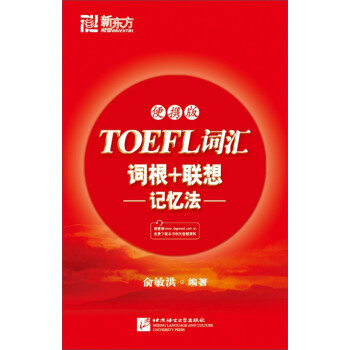



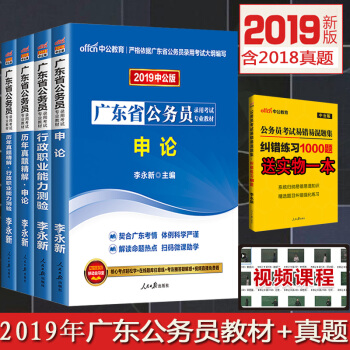

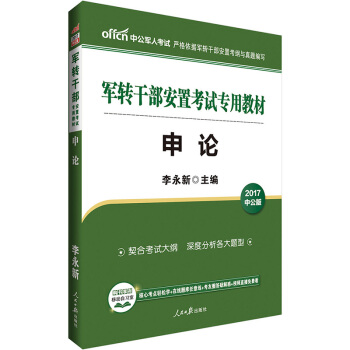
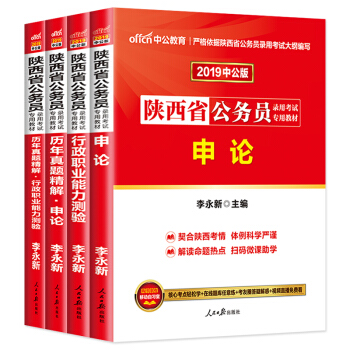
![财务决策(第二部分 英汉双语 第四版 套装上下册) [Part2 Financial Decision Making] pdf epub mobi 电子书 下载](https://pic.windowsfront.com/11650410/54dab677N2d1f1afc.jpg)
![财务报告、规划、绩效与控制(第一部分 英汉双语 第四版 套装上下册) [Part1 Financial Reporting,Planning,Performance,and Control] pdf epub mobi 电子书 下载](https://pic.windowsfront.com/11650411/54dab677N8e4cd629.jpg)
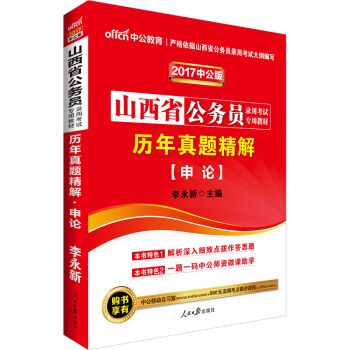

![上海外语口译证书培训与考试系列丛书·英语中级口译证书考试:中级翻译教程(第四版) [An Fntermediate Course of Translation] pdf epub mobi 电子书 下载](https://pic.windowsfront.com/11443774/rBEhWFNdu58IAAAAAANw0R7cKEMAAMi_wEyGxcAA3Dp021.jpg)

